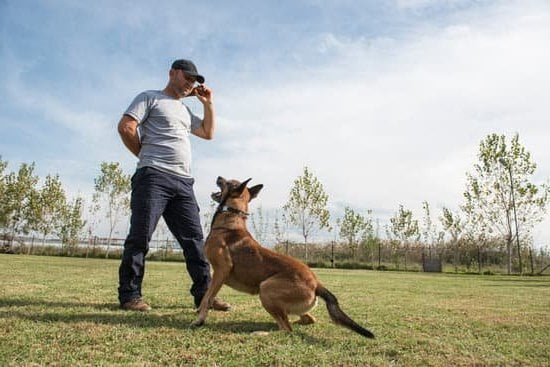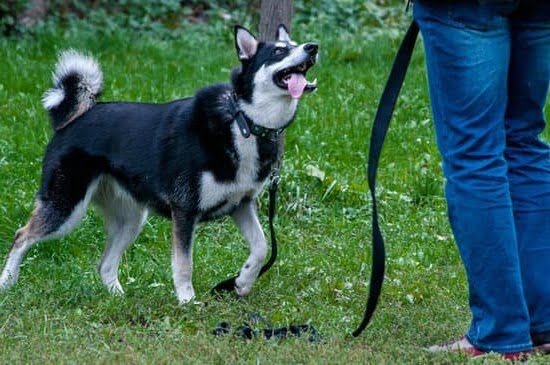Where can I train my dog for search and rescue? Search and rescue training for dogs is crucial as they play a vital role in locating missing individuals during emergency situations. Dogs have an incredible sense of smell and agility, making them invaluable assets in search and rescue missions. Training your dog for search and rescue not only enhances their natural abilities but also contributes to the safety of communities.
Search and rescue training for dogs requires a combination of specific skills such as scent detection, tracking, agility, obedience, and stamina. These skills are essential for a dog to effectively navigate various terrains and locate missing individuals in different scenarios. It is important to understand the requirements involved in search and rescue training to ensure that your dog receives the necessary guidance and preparation.
Choosing the right breed for search and rescue training is also crucial as some breeds are better suited for this type of work due to their physical abilities, temperament, and instincts. Working breeds such as German Shepherds, Labrador Retrievers, and Belgian Malinois are commonly selected for search and rescue operations due to their intelligence, endurance, and willingness to work. Selecting the right breed that aligns with the demands of search and rescue training is essential for success in these endeavors.
Understanding the Requirements for Search and Rescue Training for Dogs
Search and rescue training for dogs is a crucial skill that can potentially save lives in emergency situations. Before embarking on this training journey with your furry companion, it’s important to understand the requirements involved. Firstly, your dog should have a strong foundation of basic obedience training. This includes commands such as sit, stay, come, and heel. These basic commands form the building blocks for more advanced search and rescue training.
Physical Fitness Requirements
In addition to obedience skills, dogs undergoing search and rescue training should be physically fit. They will need to navigate various terrains, endure long hours of searching, and possibly even carry out rescues if needed. Regular exercise and conditioning are essential to ensure that your dog is up for the demands of search and rescue work.
Temperament and Drive
Another important requirement for search and rescue training is a dog’s temperament and drive. Dogs involved in this kind of work should be confident, focused, resilient, and eager to work. They should also possess a strong hunt drive or desire to search for humans in different scenarios. These qualities are crucial for successful search and rescue missions.
By understanding these requirements for search and rescue training for dogs, you can assess whether your canine companion has what it takes to excel in this field. It’s essential to set realistic expectations based on your dog’s abilities and temperament before committing to the rigorous training process
Choosing the Right Breed for Search and Rescue Training
Characteristics to Look For
When selecting a breed for search and rescue training, it is important to consider certain characteristics that are advantageous for this type of work. Some key traits to look for include high energy levels, excellent scenting ability, good problem-solving skills, sociability, agility, and a strong desire to please their handler. Breeds such as German Shepherds, Labrador Retrievers, Belgian Malinois, Border Collies, and Bloodhounds are often preferred for search and rescue operations due to their innate qualities.
Evaluating Individual Dogs
It is important to note that while certain breeds may have the potential for search and rescue work, not every individual dog within that breed will necessarily excel in this field. It is crucial to assess each dog’s temperament, health status, drive, and willingness to work before embarking on a training program. Working with reputable trainers or organizations can help you evaluate your dog’s suitability for search and rescue training before making a commitment.
Specialized Breeds
In addition to the more common search and rescue breeds mentioned earlier, there are also specialized breeds that are specifically bred and trained for certain types of search and rescue operations. For example, Newfoundlands are known for their water rescue capabilities, while Beagles excel in scent detection work. Depending on the specific needs of your search and rescue team or organization, you may want to consider these specialized breeds as well when choosing the right dog for the job.
Finding Reputable Organizations or Trainers for Search and Rescue Training for Dogs
Training a dog for search and rescue operations is a specialized skill that requires proper guidance and instruction. Finding reputable organizations or trainers who specialize in this type of training is crucial to ensure the success and safety of both the dog and handler. Here are some ways to locate reliable resources for search and rescue training:
- Check with local search and rescue teams: Local search and rescue teams often have connections with reputable trainers who have experience in training dogs for search and rescue missions. Contacting these teams can provide valuable information on where to find the best training programs.
- Research national organizations: National organizations such as the National Association for Search and Rescue (NASAR) or the American Rescue Dog Association (ARDA) may offer resources or recommendations for qualified trainers in your area. These organizations often have strict standards for their approved trainers, ensuring quality instruction.
- Attend workshops or seminars: Many search and rescue trainers conduct workshops or seminars to educate handlers on effective training techniques. Attending these events can not only expand your knowledge but also help you network with experienced professionals in the field.
It is important to thoroughly research any organization or trainer before enrolling your dog in a search and rescue training program. Look for reviews or testimonials from previous clients, inquire about their training methods and philosophies, and verify their certifications or credentials. By choosing a reputable trainer, you can set yourself up for success in preparing your dog for search and rescue operations.
In addition to finding a reputable organization or trainer, it is essential to consider the specific needs of your dog when selecting a training program. Each dog has its own strengths, weaknesses, and aptitudes, so finding a trainer who can tailor the program to suit your dog’s abilities is key. With dedication, patience, and proper guidance from a qualified professional, you can train your dog to become a valuable asset in search and rescue missions.
Exploring Different Training Methods and Techniques for Search and Rescue Training
Training a dog for search and rescue operations requires specific methods and techniques to ensure they are adequately prepared for the tasks at hand. There are various approaches that can be used, each with its own benefits and challenges. Here are some of the most common training methods and techniques used in search and rescue training for dogs:
- Scent Detection Training: This method involves teaching the dog to detect and locate specific scents associated with missing individuals. Dogs have an incredible sense of smell, making them valuable assets in search and rescue missions.
- Agility Training: Agility training helps dogs navigate through challenging terrains, obstacles, and different environments during search and rescue operations. This type of training improves the dog’s physical abilities and coordination.
- Obedience Training: Obedience training is essential for search and rescue dogs as it ensures they follow commands promptly and accurately. Dogs must respond quickly to instructions from their handlers during emergencies.
Another key aspect of search and rescue training for dogs is exposure to real-life scenarios where they can practice their skills in simulated situations. This type of hands-on experience helps reinforce their training and prepares them for the unpredictable nature of search and rescue missions.
Ultimately, finding a reputable organization or trainer is crucial when exploring different training methods and techniques for search and rescue training. These professionals can provide guidance, support, and expertise to help you effectively train your dog for search and rescue operations. Researching organizations or trainers where can I train my dog for search and rescue will ensure that your furry companion receives the best possible training available.
Tips for Training Your Dog for Search and Rescue at Home
Training your dog for search and rescue can be a rewarding experience that not only helps others in need but also strengthens the bond between you and your furry companion. While professional organizations and trainers offer structured programs to prepare dogs for search and rescue missions, there are also ways to train your dog at home to develop their skills further.
One important aspect of training your dog for search and rescue at home is establishing a strong foundation in basic obedience commands. Commands such as sit, stay, come, and heel are essential for effective communication with your dog during search and rescue operations. Practice these commands regularly in different environments to ensure that your dog can follow them reliably in any situation they may encounter during a mission.
In addition to obedience training, exposing your dog to various scents and teaching them to track or locate specific objects can also be beneficial for search and rescue training at home. You can set up simple exercises using treats or toys hidden in different locations for your dog to find. This helps sharpen their scent detection skills and encourages them to use their natural instincts during search and rescue scenarios.
| Training Methods | Benefits |
|---|---|
| Obedience Training | Effective communication during operations |
| Scent Detection Exercises | Sharpening natural instincts |
Understanding the Time and Commitment Needed for Search and Rescue Training
Search and rescue training for dogs is a time-consuming and commitment-heavy endeavor that requires dedication from both the handler and the canine. It is essential to understand that preparing a dog for search and rescue operations involves consistent training, practice, and reinforcement of specific skills. The process can vary in duration depending on the individual dog, their abilities, and the complexity of the training program.
Dogs trained for search and rescue typically undergo months or even years of intensive training to ensure they are ready for real-life scenarios. This training includes obedience commands, agility exercises, scent detection drills, search techniques, endurance building, and exposure to various environments. Handlers must commit to regular training sessions, often multiple times a week, to maintain and improve their dog’s skills continuously.
Moreover, search and rescue training requires not only physical but also mental endurance from both the dog and the handler. The bond between them plays a crucial role in successful search and rescue missions. Building trust, communication, and understanding between the duo takes time and patience. The journey of preparing a dog for search and rescue is challenging but immensely rewarding when you witness your furry companion saving lives.
| Training Requirement | Time Commitment |
|---|---|
| Obedience Commands | Regular Sessions |
| Scent Detection Drills | Months to Years of Training |
| Mental Endurance | Establishing Trust & Communication |
Real-Life Success Stories of Dogs Trained for Search and Rescue Operations
One of the most inspiring aspects of search and rescue training for dogs is seeing the real-life success stories of these specially trained canines. These heroic dogs have proven time and time again that with the right training, they can make a significant difference in locating missing persons during emergency situations. From finding lost hikers in rugged terrains to detecting survivors in disaster areas, these dogs play a crucial role in saving lives.
One notable success story is that of Bailey, a Labrador Retriever who was trained for search and rescue operations. Bailey’s keen sense of smell and unwavering determination helped locate a young boy who had gone missing in dense wooded areas. Thanks to Bailey’s training and skills, the boy was found safe and reunited with his family. This heartwarming story highlights the importance of investing time and effort into search and rescue training for dogs.
Another remarkable example is Max, a German Shepherd who was trained to assist in disaster response missions. During a devastating earthquake, Max played a vital role in locating survivors trapped under rubble. His expert training allowed him to navigate through the debris effectively and help rescue teams find those in need of assistance. These success stories demonstrate the incredible capabilities of search and rescue dogs and serve as a testament to the value of proper training for such important tasks.
Conclusion
In conclusion, the importance of search and rescue training for dogs cannot be overstated. These canine companions have the ability to save lives in critical situations, making them invaluable assets during emergencies. By investing time and effort into training your dog for search and rescue operations, you are not only enhancing their skills but also aiding in community safety and disaster response efforts.
When considering where to train your dog for search and rescue, it is crucial to understand the requirements and choose the right breed that possesses the necessary traits for this type of work. Researching reputable organizations or trainers who specialize in search and rescue training is essential to ensure that your dog receives proper instruction and guidance throughout their training journey.
Additionally, exploring different training methods and techniques can help enhance your dog’s skills and prepare them for real-life scenarios.
As you embark on this rewarding training journey with your four-legged companion, remember that dedication, consistency, and patience are key elements in achieving success. Real-life success stories of dogs trained for search and rescue operations serve as a testament to the incredible capabilities of these animals when given the opportunity to train and excel in their roles.
So, if you find yourself asking “Where can I train my dog for search and rescue? “, know that with the right resources and commitment, you can help your dog become a valuable asset in times of need.
Frequently Asked Questions
Can I Train My Dog to Be a Search and Rescue Dog?
Training your dog to be a search and rescue dog is definitely possible, but it requires a significant amount of time, effort, and dedication. The process typically involves obedience training, agility training, scent detection training, and socialization. Some dogs may be more suited for this role than others based on their breed, temperament, and physical abilities.
How Do I Become a FEMA Canine Handler?
To become a FEMA canine handler, you must first have experience working with search and rescue dogs. This usually involves volunteering with local search and rescue teams or organizations to gain practical experience in handling these highly trained dogs. Additionally, FEMA requires handlers to complete specific training courses and certifications to ensure they are prepared for emergency response situations.
What Age Do Search and Rescue Dogs Start Training?
Search and rescue dogs often start their training at a young age to build the necessary skills and obedience required for this demanding role. Puppies as young as a few months old can begin basic training such as socialization, obedience commands, and exposure to different environments.
As they mature physically and mentally, they progress to more advanced training in scent detection, agility, tracking, and simulated search scenarios. Each dog is unique in their development timeline, so training progress will vary from one dog to another.

Welcome to the blog! I am a professional dog trainer and have been working with dogs for many years. In this blog, I will be discussing various topics related to dog training, including tips, tricks, and advice. I hope you find this information helpful and informative. Thanks for reading!





